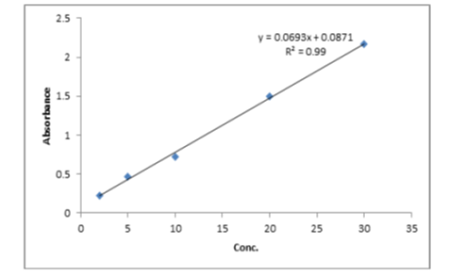


Indian Journal of Science and Technology
DOI: 10.17485/IJST/v14i37.2241
Year: 2021, Volume: 14, Issue: 37, Pages: 2860-2864
Original Article
Anuj Kumar Garg1*
1Assistant Professor, S.S.V. College, Hapur, 245101, U.P, India
*Corresponding Author
Email: [email protected]
Received Date:23 December 2020, Accepted Date:11 October 2021, Published Date:03 November 2021
Objective -To determine the content of caffeine in the beverages like green tea, black tea, and soft drink which are commercially available in the local market of Hapur with the help of a UV Visible spectrophotometer. Method- To find out the content of caffeine, six different brands of green tea, black tea, and soft drink were purchased from the local market in Hapur. The caffeine was extracted from them using chloroform as an extractant and assessed qualitatively and quantitatively with the help of a UV Visible spectrophotometer. The maximum absorbance of caffeine in chloroform occurs at 273 nm. The standard solutions of caffeine from the range 2-30 ppm were prepared in the chloroform, show the linearity with the correlation coefficient of 0.99. From the calibration curve, the concentration of caffeine was determined in various brands. It is observed that black tea contains the maximum caffeine content followed by green tea and soft drinks. Findings- In this study the maximum caffeine content find out was (45.6 mg/g) in the Nice black tea sample and the minimum (0.161 mg/ml) in Pepsi soft drink sample. Novelty-The caffeine content reported here is higher than that of previous studies may be due to the modified approach [treatment temperature (90-1000C) and longer brewing time (05 minutes) in this study. The use of the UV-Visible spectrophotometer is also an alternative to the HPLC technique, thereby the working cost could be brought down.
Keywords: Caffeine; brewing time; beverages; UV visible spectrophotometer; extraction
© 2021 Garg. This is an open-access article distributed under the terms of the Creative Commons Attribution License, which permits unrestricted use, distribution, and reproduction in any medium, provided the original author and source are credited. Published By Indian Society for Education and Environment (iSee)
Subscribe now for latest articles and news.